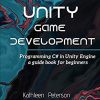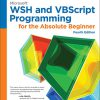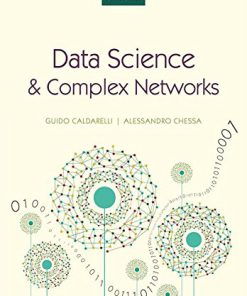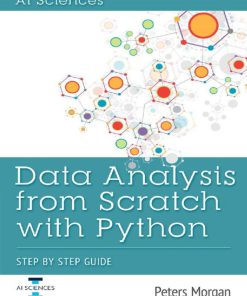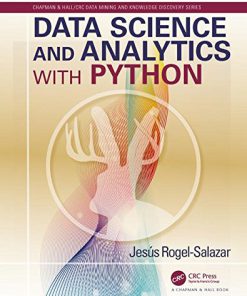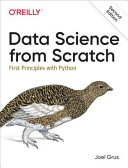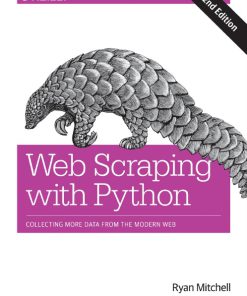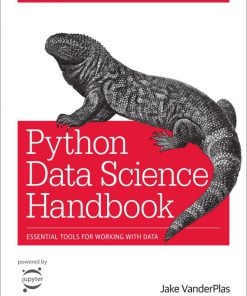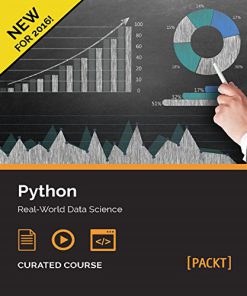Data Science from Scratch First Principles with Python 2nd Edition by Joel Grus ISBN 1492041084 9781492041085
$50.00 Original price was: $50.00.$25.00Current price is: $25.00.
Data Science from Scratch First Principles with Python 2nd Edition by Joel Grus – Ebook PDF Instant Download/Delivery: 1492041084, 978-1492041085
Full dowload Data Science from Scratch First Principles with Python 2nd Edition after payment
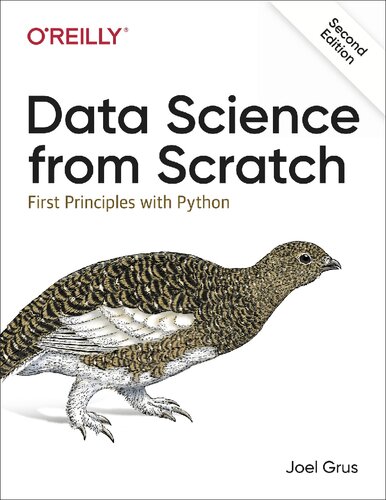
Product details:
ISBN 10: 1492041084
ISBN 13: 978-1492041085
Author: Joel Grus
To really learn data science, you should not only master the tools―data science libraries, frameworks, modules, and toolkits―but also understand the ideas and principles underlying them. Updated for Python 3.6, this second edition of Data Science from Scratch shows you how these tools and algorithms work by implementing them from scratch.
If you have an aptitude for mathematics and some programming skills, author Joel Grus will help you get comfortable with the math and statistics at the core of data science, and with the hacking skills you need to get started as a data scientist. Packed with new material on deep learning, statistics, and natural language processing, this updated book shows you how to find the gems in today’s messy glut of data.
- Get a crash course in Python
- Learn the basics of linear algebra, statistics, and probability―and how and when they’re used in data science
- Collect, explore, clean, munge, and manipulate data
- Dive into the fundamentals of machine learning
- Implement models such as k-nearest neighbors, Naïve Bayes, linear and logistic regression, decision trees, neural networks, and clustering
- Explore recommender systems, natural language processing, network analysis, MapReduce, and databases
Data Science from Scratch First Principles with Python 2nd Table of contents:
Here is the table of contents for the book “Data Science from Scratch” (likely referring to Data Science from Scratch: First Principles with Python by Joel Grus):
1. Introduction
- The Ascendance of Data
- What Is Data Science?
- Motivating Hypothetical: DataSciencester
- Finding Key Connectors
- Data Scientists You May Know
- Salaries and Experience
- Paid Accounts
- Topics of Interest
- Onward
2. A Crash Course in Python
- The Zen of Python
- Getting Python
- Virtual Environments
- Whitespace Formatting
- Modules
- Functions
- Strings
- Exceptions
- Lists
- Tuples
- Dictionaries
- defaultdict
- Counters
- Sets
- Control Flow
- Truthiness
- Sorting
- List Comprehensions
- Automated Testing and assert
- Object-Oriented Programming
- Iterables and Generators
- Randomness
- Regular Expressions
- Functional Programming
- zip and Argument Unpacking
- args and kwargs
- Type Annotations
- How to Write Type Annotations
- Welcome to DataSciencester!
- For Further Exploration
3. Visualizing Data
- matplotlib
- Bar Charts
- Line Charts
- Scatterplots
- For Further Exploration
4. Linear Algebra
- Vectors
- Matrices
- For Further Exploration
5. Statistics
- Describing a Single Set of Data
- Central Tendencies
- Dispersion
- Correlation
- Simpson’s Paradox
- Some Other Correlational Caveats
- Correlation and Causation
- For Further Exploration
6. Probability
- Dependence and Independence
- Conditional Probability
- Bayes’s Theorem
- Random Variables
- Continuous Distributions
- The Normal Distribution
- The Central Limit Theorem
- For Further Exploration
7. Hypothesis and Inference
- Statistical Hypothesis Testing
- Example: Flipping a Coin
- p-Values
- Confidence Intervals
- p-Hacking
- Example: Running an A/B Test
- Bayesian Inference
- For Further Exploration
8. Gradient Descent
- The Idea Behind Gradient Descent
- Estimating the Gradient
- Using the Gradient
- Choosing the Right Step Size
- Using Gradient Descent to Fit Models
- Minibatch and Stochastic Gradient Descent
- For Further Exploration
9. Getting Data
- stdin and stdout
- Reading Files
- The Basics of Text Files
- Delimited Files
- Scraping the Web
- HTML and the Parsing Thereof
- Example: Keeping Tabs on Congress
- Using APIs
- JSON and XML
- Using an Unauthenticated API
- Finding APIs
- Example: Using the Twitter APIs
- Getting Credentials
- For Further Exploration
10. Working with Data
- Exploring Your Data
- Exploring One-Dimensional Data
- Two Dimensions
- Many Dimensions
- Using NamedTuples
- Dataclasses
- Cleaning and Munging
- Manipulating Data
- Rescaling
- An Aside: tqdm
- Dimensionality Reduction
- For Further Exploration
11. Machine Learning
- Modeling
- What Is Machine Learning?
- Overfitting and Underfitting
- Correctness
- The Bias-Variance Tradeoff
- Feature Extraction and Selection
- For Further Exploration
12. k-Nearest Neighbors
- The Model
- Example: The Iris Dataset
- The Curse of Dimensionality
- For Further Exploration
13. Naive Bayes
- A Really Dumb Spam Filter
- A More Sophisticated Spam Filter
- Implementation
- Testing Our Model
- Using Our Model
- For Further Exploration
14. Simple Linear Regression
- The Model
- Using Gradient Descent
- Maximum Likelihood Estimation
- For Further Exploration
15. Multiple Regression
- The Model
- Further Assumptions of the Least Squares Model
- Fitting the Model
- Interpreting the Model
- Goodness of Fit
- Digression: The Bootstrap
- Standard Errors of Regression Coefficients
- Regularization
- For Further Exploration
16. Logistic Regression
- The Problem
- The Logistic Function
- Applying the Model
- Goodness of Fit
- Support Vector Machines
- For Further Investigation
17. Decision Trees
- What Is a Decision Tree?
- Entropy
- The Entropy of a Partition
- Creating a Decision Tree
- Putting It All Together
- Random Forests
- For Further Exploration
18. Neural Networks
- Perceptrons
- Feed-Forward Neural Networks
- Backpropagation
- Example: Fizz Buzz
- For Further Exploration
19. Deep Learning
- The Tensor
- The Layer Abstraction
- The Linear Layer
- Neural Networks as a Sequence of Layers
- Loss and Optimization
- Example: XOR Revisited
- Other Activation Functions
- Example: FizzBuzz Revisited
- Softmaxes and Cross-Entropy
- Dropout
- Example: MNIST
- Saving and Loading Models
- For Further Exploration
20. Clustering
- The Idea
- The Model
- Example: Meetups
- Choosing k
- Example: Clustering Colors
- Bottom-Up Hierarchical Clustering
- For Further Exploration
21. Natural Language Processing
- Word Clouds
- n-Gram Language Models
- Grammars
- An Aside: Gibbs Sampling
- Topic Modeling
- Word Vectors
- Recurrent Neural Networks
- Example: Using a Character-Level RNN
- For Further Exploration
22. Network Analysis
- Betweenness Centrality
- Eigenvector Centrality
- Matrix Multiplication
- Centrality
- Directed Graphs and PageRank
- For Further Exploration
23. Recommender Systems
- Manual Curation
- Recommending What’s Popular
- User-Based Collaborative Filtering
- Item-Based Collaborative Filtering
- Matrix Factorization
- For Further Exploration
24. Databases and SQL
- CREATE TABLE and INSERT
- UPDATE
- DELETE
- SELECT
- GROUP BY
- ORDER BY
- JOIN
- Subqueries
- Indexes
- Query Optimization
- NoSQL
- For Further Exploration
25. MapReduce
- Example: Word Count
- Why MapReduce?
- MapReduce More Generally
- Example: Analyzing Status Updates
- Example: Matrix Multiplication
- An Aside: Combiners
- For Further Exploration
26. Data Ethics
- What Is Data Ethics?
- No, Really, What Is Data Ethics?
- Should I Care About Data Ethics?
- Building Bad Data Products
- Trading Off Accuracy and Fairness
- Collaboration
- Interpretability
- Recommendations
- Biased Data
- Data Protection
- In Summary
- For Further Exploration
27. Go Forth and Do Data Science
- IPython
- Mathematics
- Not from Scratch
- NumPy
- pandas
- scikit-learn
- Visualization
People also search for Data Science from Scratch First Principles with Python 2nd:
data science from scratch first principles with python
borrow data science from scratch first principles with python
synopsis of data science from scratch first principles with python
how python is related to data science
why is python good for data science
You may also like…
Computers - Computer Science
Computers - Programming
Python Data Science Handbook Essential Tools for Working with Data 1st Edition Jake Vanderplas
Computers - Databases
Data Science and Analytics with Python 1st Edition Jesus Rogel-Salazar
Computers - Programming
Computers - Organization and Data Processing
Web scraping with Python collecting more data from the modern web 2nd Edition Ryan E. Mitchell
History
Python Data Science Handbook Essential Tools for Working with Data 1st Edition Jake Vanderplas
Computers - Programming


